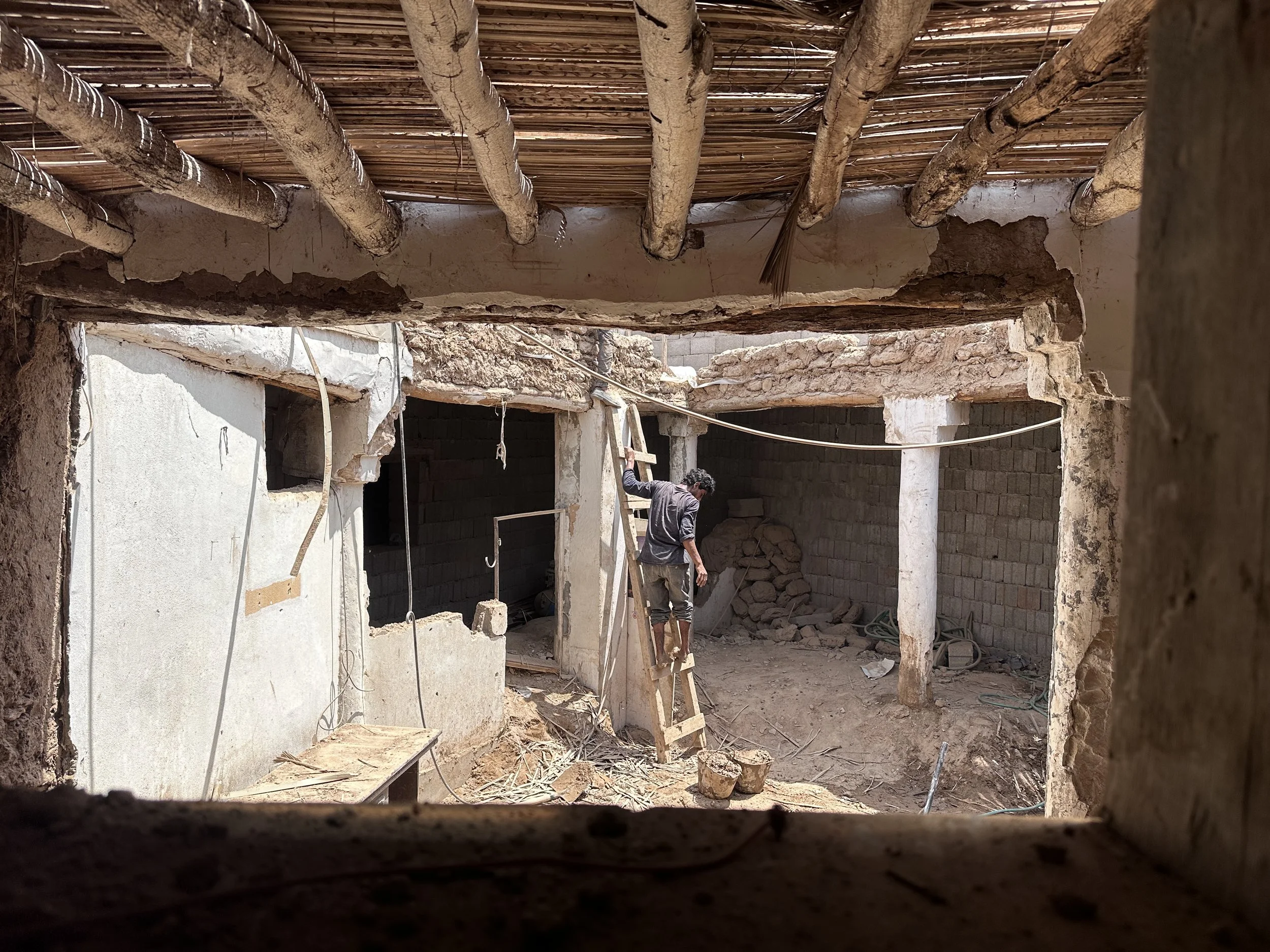New Publication: Mud as a Living Material
Beyond Materiality: Mud as a Living Material in Heritage Preservation. Frontiers in Sustainable Cities
We are pleased to announce the publication of our latest research article, “Beyond Materiality: Mud as a Living Material in Heritage Preservation,” now available in Frontiers in Sustainable Cities. Co-authored by Carine Lteif, David Aouad, and Roula El-Khoury, this paper offers a critical exploration of mud not merely as a construction material, but as a bearer of memory, identity, and ecological intelligence.
This paper investigates the multifaceted role of mud in heritage preservation, focusing on the Bayt Isa restoration project in old Irqah within Wadi Hanifa, a site rich in historical significance in the Kingdom of Saudi Arabia. It aims at investigating the importance of mud beyond its geophysical properties, examining it as a semiotic material imbued with cultural meaning, sensorial qualities, and traditional communal practices. Furthermore, departing from a private restoration initiative, it is looking to learn from endeavors unbound by conventional building regulations and that could inform heritage preservation projects in Saudi Arabia and elsewhere in the world. To explore the role of mud in heritage preservation, the research relies on a literature review and a case study approach. The literature review identifies research emphasizing the cultural and sensory significance of mud in fostering social cohesion and collective identity. Furthermore, the case study of the Bayt Isa restoration in Wadi Hanifa examines mud as a dynamic material, bridging historical narratives and community values through qualitative research methods, including interviews with stakeholders, artisans, and visitors.
Through an exploration of the semiotics of mud, this -research highlights its cultural and symbolic dimensions, revealing how mud embodies a lifestyle that fosters a deep sense of place and experience. The sensorial qualities of mud architecture—its tactile warmth and aesthetic appeal—forge emotional connections within the community, enhancing the lived experience of its inhabitants. Additionally, the paper underscores the importance of community engagement in mud construction, where local participation not only revitalizes traditional practices but also strengthens social bonds. Ultimately, this research advocates for heritage preservation approaches that transcend the mere conservation of traditional construction techniques. It posits that mud represents a vital process of cultural continuity and community development. Recognizing mud as more than a mere building material, we emphasize the need for a supportive framework that encourages private initiatives in mud heritage preservation. Such a framework should ensure that preservation efforts are context-specific, genuine and not diluted by popular demand or commercial interests, thereby safeguarding the rich, living environment that mud provides.
The full article is available open-access on Frontiers in Sustainable Cities. We invite practitioners, researchers, and students to engage with the work and join the growing conversation on heritage preservation in the age of climate crisis.
Read the full article here
